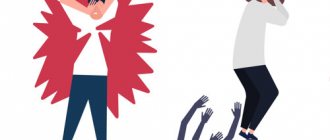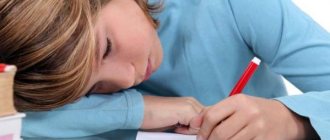What is a panic attack?
A panic attack is characterized by panic attacks that occur at least once a week.
A panic attack is a short (about 20 minutes) episode of intense fear (See Intrusive Thoughts and Fears) that is usually accompanied by physical symptoms such as rapid breathing, rapid heartbeat, sweating, chest pain and nausea. Panic disorder is diagnosed when children have panic attacks often enough to cause significant impairment.
Panic disorder is usually treated with a combination of medications and behavioral therapy with a psychologist (See Cognitive therapy in the treatment of panic disorder).
The problem is much more common among teenagers than younger children. Sometimes children experience anxiety (see Child and Adolescent Psychologist) when they are young and then develop panic disorder when they reach puberty.
Panic attacks can occur with any anxiety disorder (see Anxiety Disorders). For example, children with separation anxiety may have a panic attack when a parent leaves. Children who fear being trapped in places where there is no easy escape (agoraphobia) may have a panic attack when sitting in the middle of a row in a crowded classroom. Many children with panic disorder also have agoraphobia.
Physical disorders such as asthma can also cause panic attacks, and panic attacks can cause asthma attacks.
Panic disorder (PA) in children and adolescents is a chronic disease that is accompanied by psychosocial difficulties in both adolescence and adulthood (see Psychosomatics).
This article reviews the prevalence, clinical characteristics, risk factors, comorbid conditions, differential diagnosis, and treatment of panic attacks. Although PA is thought to be rare in children and adolescents, the prevalence of PA in community samples ranges from 0.5% to 5.0, and in child mental health clinics from 0.2% to 10%.
Panic attacks are reported to be equally common among men and women. Clinical studies have shown that the majority of pediatric patients with PsA consulted in clinics are older adolescents, women, and middle-class people.
Up to 90% of children and adolescents with panic attacks have another anxiety disorder (separation anxiety disorder, social phobia, or agoraphobia (see Agoraphobia and Panic Attacks)) or mood disorder (bipolar disorder). Patients with panic attacks may be misdiagnosed or have neurological, cardiovascular, pulmonary or gastrointestinal diseases. Comprehensive treatment is recommended, and the course and treatment of PA in children and adolescents should be further evaluated through well-designed studies.
Night attacks
Anxiety symptoms in some adolescents increase mainly at night. The clinical picture includes typical and individual symptoms. In this case, the following additional signs often appear:
- predominance of nightmares;
- waking up from a panic attack;
- insomnia due to fear of nightmares;
- involuntary urination, defecation;
- severe suffocation;
- sleep paralysis
Night attacks are more difficult for a child to endure, since fear is more intense in the dark. After a disturbing awakening, it is then impossible to fall asleep normally. Subsequently, children may experience fear before sleep and avoid staying in bed.
Children who have panic attacks during sleep should not be left alone. Lack of normal sleep can lead to the development of more severe diseases. Consultation with a psychotherapist is required.
It is extremely rare that panic attacks occur only during sleep.
It is necessary to distinguish panic attacks from nightmares. As a result, many patients with sleep panic attacks suffer from insomnia. As a rule, panic attacks tend to recur, and over time they occur more and more often, while the real reasons for their development can no longer be found. The frequency of attacks varies from daily to once every few months. Panic attacks in children / A.I. Smiyan, A.M. Yemets, Ya.S. Amelina, E.A. Lazebnik.
Symptoms and signs of a panic attack in children and teenagers
Symptoms of a panic attack include a sudden surge of intense fear accompanied by physical symptoms (eg, palpitations, sweating, trembling, shortness of breath or choking, chest pain, nausea, dizziness). Compared to those in adults, panic attacks in children and adolescents are often more dramatic (eg, screaming, crying, and hyperventilating). This can be extremely frightening for parents.
Panic attacks usually develop spontaneously, but over time, children begin to attribute them to certain situations and conditions. Affected children then try to avoid those situations that may lead to agoraphobia. Avoidance behavior is considered agoraphobic if it greatly interferes with normal functioning, such as going to school, going to the mall, or performing other typical activities.
During a panic attack, children experience intense anxiety, which causes physical symptoms:
- The heart is beating fast.
- Children may sweat profusely and choke
- They may have chest pain or dizziness, nausea or numbness
- Children may feel like they are dying or going crazy
- Things may seem unreal to them
- Symptoms may be more dramatic (including screaming, crying, or hyperventilation) than in adults
- Children may worry about other seizures
- Panic attacks and related worries interfere with relationships and schoolwork
In panic disorder, panic attacks usually occur on their own, without any specific trigger. But over time, children begin to avoid situations that they associate with seizures. This avoidance can lead to agoraphobia, which makes children reluctant to go to school, visit the mall, or engage in other typical activities.
Panic disorder often waxes and wanes for no apparent reason. Symptoms may go away on their own and then recur years later. But with treatment, most children with panic disorder improve.
Sometimes, when panic disorder is not treated, teenagers drop out of school, withdraw from society and become recluses and suicides.
Main signs in children
A panic attack has the following symptoms:
- confusion of thoughts, loss of control over speech and emotions;
- heavy breathing, shortness of breath;
- rapid pulse, pressure surges;
- tremor, trembling, chills;
- sweating;
- nausea and dizziness;
- numbness of the limbs;
- dry mouth, pale skin;
- fear of going crazy or dying.
Children may exhibit several signs at once, as well as insomnia, depression, and depression. In this case, internal tension can persist for quite a long time. This phenomenon cannot be ignored, as it can result in a nervous breakdown or even suicide. During adolescence, a person begins to perceive the world as hostile, feeling lonely and abandoned.
Against the background of panic, unreasonable fears arise, which often develop into serious phobias. Panic attacks in adolescents are facilitated by behavioral stereotypes imposed from childhood. When a child tries to express emotions, parents scold him, saying “shut your mouth!” or “stop crying!”
Read more: Psychology of child behavior
At an older age, they teach him that in any situation one must behave with restraint and decentness. Most parents conduct such education in a raised voice, in a rude, frightening form. As a result, the child’s self-esteem falls; he is afraid to express his opinion and express himself in society. He suppresses feelings and emotions, which in the future results in panic attacks.
Often seemingly quiet and calm teenagers commit stupid spontaneous acts, show aggression and cruelty.
Adults believe that such behavior is not typical for them, however, such manifestations most often occur in notorious teenagers, such “gray mice”. The volcano of constantly suppressed emotions must find a way out somewhere. A good option might be sports clubs, dancing or other activities that require physical activity. In this way, the teenager releases mental negativity and tension through the body.
Diagnosis of panic attacks in teenagers
Panic disorder is diagnosed based on a history of recurrent panic attacks, usually after a physical examination to rule out physical causes of physical symptoms. Many children undergo significant diagnostic testing before panic disorder is suspected. The presence of other disorders, especially asthma, can also complicate the diagnosis. Careful screening for other disorders (eg, obsessive-compulsive disorder (See Coping with OCD), social anxiety disorder) is necessary because any of these disorders may be the underlying problem causing panic attacks as a symptom.
In adults, important diagnostic criteria for panic disorder include concerns about future attacks, consequences of attacks, and changes in behavior. However, children and young adolescents typically lack the understanding and forethought necessary to develop these functions, except that they may change behavior to avoid situations that they believe are associated with a panic attack.
What to do in childhood
Psychologists consider creativity to be a good way to transform emotions. It allows you to free yourself from experiences, giving them a different form (music, poetry, prose, paintings). If a teenager does not find ways to release his emotions, they destroy him from exhaustion. Against this background, conflicts arise with parents, teachers, friends and loved ones. It is difficult for a teenager to figure out who supports him and who is trying to harm him. Often he compensates for disharmony with alcohol and drugs.
Girls have panic attacks much more often than boys. This is explained by the fact that the female sex is naturally more sensitive and emotional. You shouldn’t take this as a lady’s whims. If a girl has become nervous, whiny, her mood and desires often change - this is an alarming signal for both the parents and the teenager himself.
The prognosis for treatment of such conditions is good. It is possible to get rid of them without resorting to medications. Sometimes a few conversations with a psychologist or psychotherapist are enough.
However, a favorable outcome is possible only if there is a trusting relationship between parents and child. After all, an unhealthy family environment is the first factor in the development of neuroses and other mental disorders in adolescents. If parents do not pay due attention to the child, do not strive to understand and hear him, he finds solace in dubious companies and subcultures.
Psychotherapist of the highest category, Candidate of Medical Sciences: Galushchak Alexander Vasilievich on the causes of panic attacks in children and adolescents and methods of treatment in the video:
Read more: Children's fears. Causes, types and fight against phobias
If a panic attack does happen
It should be remembered that it can arise completely suddenly, so you need to be prepared to meet it. Here are some ways to deal with a panic attack:
Breath control
Try to slow down your breathing so that its frequency does not exceed 4-5 breaths per minute. Place your hands on your upper abdomen. It is better to close your eyes. You can practice this exercise at home in a calm environment.
Red Herring
You may remember something pleasant or even funny. Of course, it is very difficult to switch from a negative state, but it’s worth turning your thoughts in a different direction, stopping thinking about what actually caused the attack. It is advisable to offer to eat something or drink water or juice. It is necessary to break the vicious circle of panic by transferring the body’s attention to other actions.
The periods between panic attacks can be characterized by either a complete absence of negative signs or chronic anxiety and tension. Blocking panic symptoms with sedatives only makes the problem worse.








